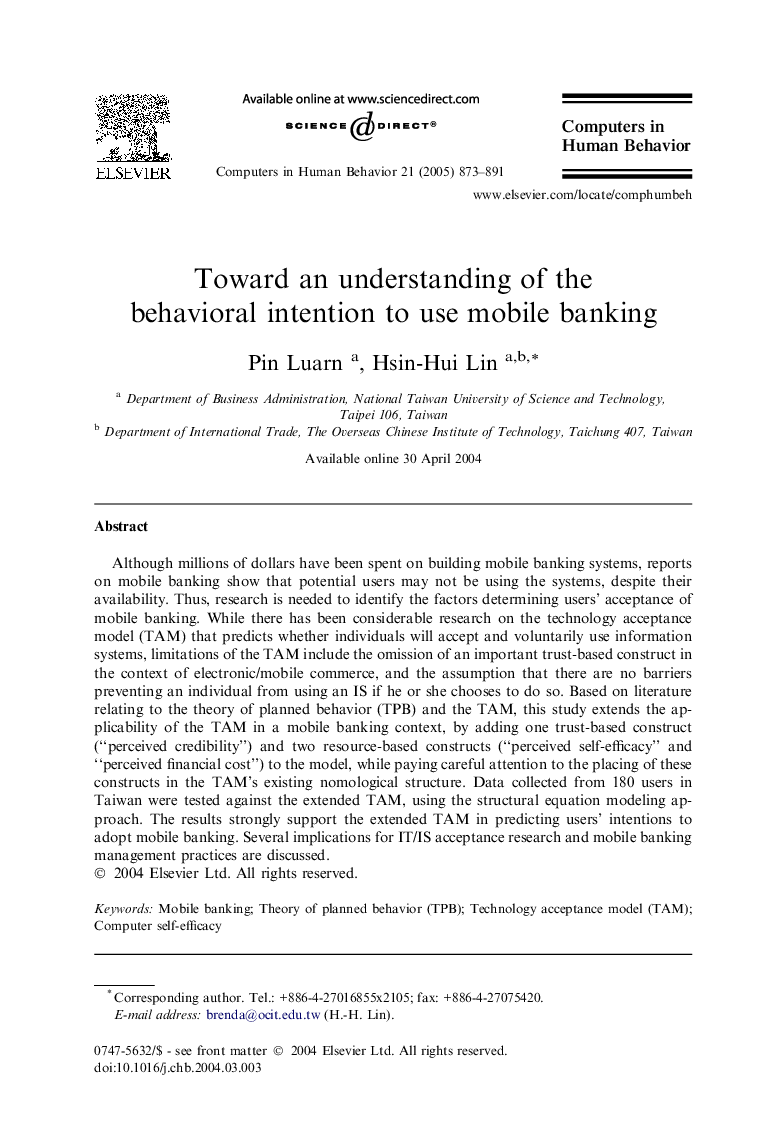| Article ID | Journal | Published Year | Pages | File Type |
|---|---|---|---|---|
| 10312813 | Computers in Human Behavior | 2005 | 19 Pages |
Abstract
Although millions of dollars have been spent on building mobile banking systems, reports on mobile banking show that potential users may not be using the systems, despite their availability. Thus, research is needed to identify the factors determining users' acceptance of mobile banking. While there has been considerable research on the technology acceptance model (TAM) that predicts whether individuals will accept and voluntarily use information systems, limitations of the TAM include the omission of an important trust-based construct in the context of electronic/mobile commerce, and the assumption that there are no barriers preventing an individual from using an IS if he or she chooses to do so. Based on literature relating to the theory of planned behavior (TPB) and the TAM, this study extends the applicability of the TAM in a mobile banking context, by adding one trust-based construct (“perceived credibility”) and two resource-based constructs (“perceived self-efficacy” and “perceived financial cost”) to the model, while paying careful attention to the placing of these constructs in the TAM's existing nomological structure. Data collected from 180 users in Taiwan were tested against the extended TAM, using the structural equation modeling approach. The results strongly support the extended TAM in predicting users' intentions to adopt mobile banking. Several implications for IT/IS acceptance research and mobile banking management practices are discussed.
Keywords
Related Topics
Physical Sciences and Engineering
Computer Science
Computer Science Applications
Authors
Pin Luarn, Hsin-Hui Lin,
